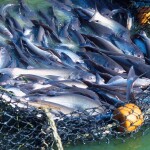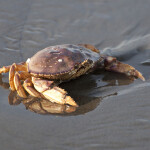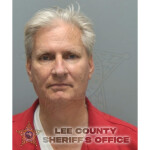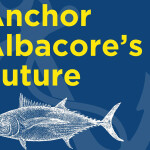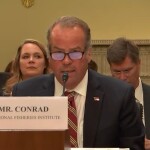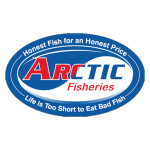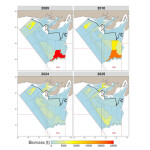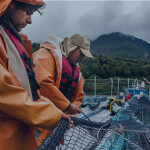Introducing seafood’s new FICO score for responsible sourcing
Sponsored
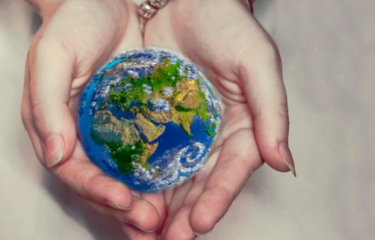
What if there was a straightforward way for consumers to gauge their responsible buying decisions, and for seafood companies’ positive actions for the planet to translate into increased sales?
Now there is, thanks to wholesale food industry veteran Frank Terzoli and full-stack software engineer and data integrations expert Philip Heggelund, who joined forces to create the Earth Responsibility Score (ERS) – the first business-to-business and business-to-consumer tangible matrix that aggregately ranks seafood products based on their quality and sustainability bona fides.
Terzoli, a celebrity chef and leader in the food traceability space, has observed many in the seafood industry struggling over the years to share their sustainability credentials and stories in a format that truly resonates with modern consumers and retailers. There is no shortage of certificates and programs that seafood firms can pursue to prove their mettle in the sustainability realm, Terzoli told SeafoodSource, however, consumer awareness is sorely lacking when it comes to what these accomplishments actually mean. As a result, responsible products are being passed over or not getting their deserved premium in the marketplace, Terzoli said.
“The consumer who buys my product doesn’t know that I’ve replaced the mangroves and set up a dentistry intern in the area where I’ve bought 300 hectares of shrimp farms, for example. They don’t know that I’m carbon-zero. They don’t know that I use all recyclables. They don’t know that I pay my laborers a higher wage than anybody else. They don’t know the extra steps I take to create the most wholesome sustainable product possible,” Terzoli said.
That’s where ERS comes in.
“Think about it as a FICO score for responsible sourcing,” Terzoli said.
Producers submit individual SKUs for inclusion on the ERS platform, along with all the relevant responsibility certificates and documentation.
“The burden of proof is on the producer, the person who owns the SKU of the product,” Terzoli explained. “Whoever owns that SKU is responsible for putting the information into the ERS system. And the burden of proof for their claims falls on them as well.”
Once a company provides their burden of proof, the ERS system calculates an aggregate score for the producer and their SKUs based on eight base elements: supply-chain transparency (traceability), consumer safety control measures, responsible sourcing practices, carbon footprint rating, product quality quantifiers, applicable sustainability ratings, human rights, and third-party audits.
“Each category is scored separately then aggregated together, which allows for a more complete matrix for consumers to base their buying decisions on. It also highlights for companies potential areas for improvement,” Terzoli said.
The ERS team “performs a lot of different services for participating companies,” Terzoli noted, including supply-chain mapping and continuous real-time reporting of a given supplier’s certifications.
“We save companies a ton of money in labor for USD 100 [EUR 94] per SKU, per year,” he said.
Scores are generated once a year and can be printed on product packaging, Terzoli said, plus suppliers are provided with a corresponding QR code and will receive placement on the ERS consumer app, due out at the end of 2023.
There are two overarching pieces to ERS, according to Terzoli.
“There’s the area where it’s B2B, where you get your score, where you upload your certifications, where you do your reporting to us, where you get your aggregate. And that gets you not only listed on the ERS site, but it also is going to have you listed on the consumer app, the second piece. The consumer app, which will launch at the end of the year, takes into account beef, chicken, produce, fish, poultry, frozen food, shelf-stable goods, pet food, cosmetics, and clothing – about 1.5 billion SKUs.”
Shoppers using the app can view an aggregate breakdown of where products sit in all of these categories and “how responsible they are based on what’s important to you as a consumer,” Terzoli explained. When a consumer favorites a product on the app, ERS can reward the IP address one-to-one with coupons and discounts, per Terzoli, helping to drive change and incentivize consumers to buy according to their sustainable values.
“The consumer has the benefit of being able to search for products with qualities that match what's important to them, and get all the information in one place,” Terzoli said.
ERS is agnostic and 100 percent data-driven, Terzoli added, meaning that suppliers “are competing against their peers that sit in the same space.”
“Products compete with other similar products in the marketplace – there is no one person or group that determines what should weigh more in the scoring, and each year you have to improve your practices to keep that same score. We are driving the market to continuously improve practices,” Terzoli said. “So, the responsible practices that got you a 95 one year, will not get you a 95 in the next year – you have to improve. We are driving global change in corporate practices through consumer engagement.”
Put into motion six years ago, Terzoli said the first-of-its-kind ERS concept has made it to market now that “technology has finally caught up with the industry and consumers have finally caught up, to the point where they’re driving what’s on the shelves.”
“The paradigm shift has finally eclipsed,” Terzoli said.
Terzoli hopes the accessible ERS platform will help level-out the playing field between food producers of various sizes and origins, operating in the same spheres.
“There are a lot of lesser-known products that have way more responsible scores than your big grade items, so the playing field becomes equal based on corporate responsibility, sourcing responsibility, and corporate environmental practices. That’s it – that’s the differentiator. You get out what you put in,” he said. “You buy no software. You buy no hardware. It’s 100 percent agnostic. It sits outside of everybody’s system. There’s no aggregations, no API’s. You just have to go in and enter your information and back it up – tell me your corporate sourcing story, in words and pictures.”
At its core, Terzoli said ERS seeks to inspire and celebrate the industry’s sustainable efforts in a way that everyone can understand.
“Ultimately, the sustainability of the industry and the sustainability of our oceans really depends on companies continuing to change,” he said. “I want the industry to know that what they do matters, and they should be rewarded for it.”
For more information on ERS, Terzoli encouraged those attending Seafood Expo North America next month – from 12 to 14 March, 2023, in Boston, Massachusetts, U.S.A. – to visit Booth #486. Additionally, expo attendees can stop by the free sponsored session, “Advancing Costs Associated with Responsible Practices into Product Value,” on Monday, 13 March from 9:15 – 10:00 a.m. EST to learn more about ERS. Terzoli can be reach online as well via his email, [email protected], and on Instagram @earthresponsibilityscore.

